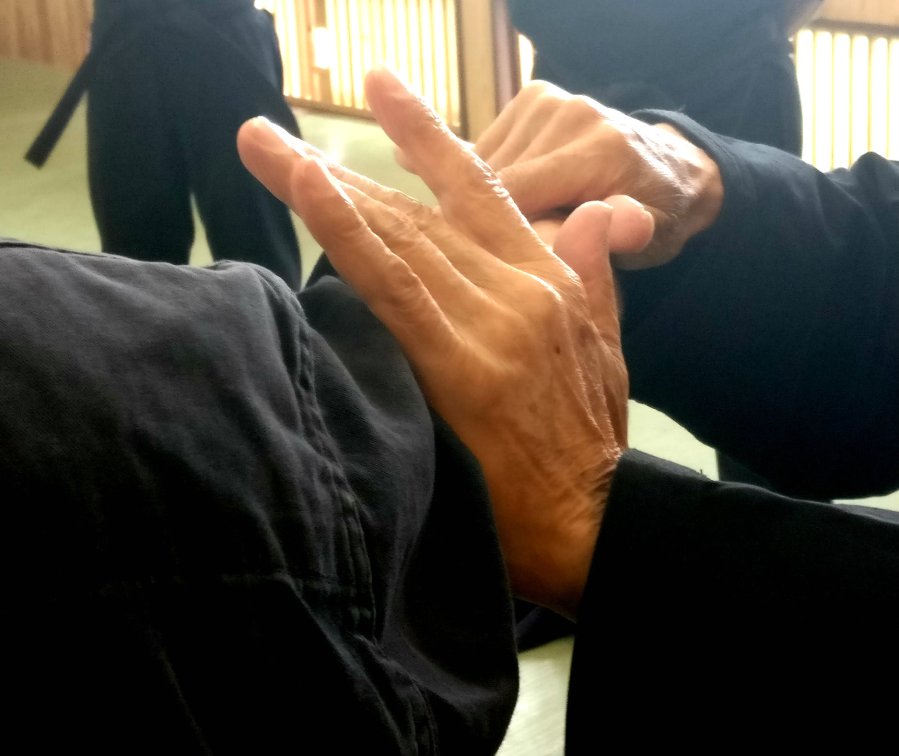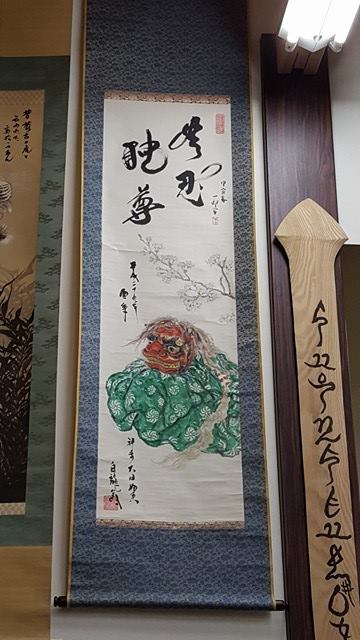Kantan Janai!
From Shiro Kuma's Blog by kumablog
 Senō sensei’s class was very technical, even more than usual. Luckily my partner was Holger, and we were both very much into learning because it was not easy.
Senō sensei’s class was very technical, even more than usual. Luckily my partner was Holger, and we were both very much into learning because it was not easy.
Too often, when you partner with a beginner, you end up being bored or correcting your partner. Today, thanks to him I enjoyed the research/training we both did.
The locks by Senō sensei were subtle, and we had a hard time finding the right amount of force to apply them correctly.
He didn’t teach many techniques during this training session, but each one he did require a lot of work. We went to him several times for each movement to “feel” them. And even after we had experienced them, we had a real difficulty to get them correctly. It was high-level taijutsu.
I’m not saying that the movements done by the other Shihan are easy, but at least I am more used to their taijutsu. As a joke, I told him that his techniques were “Kantan” (easy), (as they were not), and he kept repeating it after each demonstration while laughing. Senō sensei is a gentleman of Budō. It is hard to accept that he was one of the more dangerous and fierce students of Hatsumi sensei when he was young!
At some point, he changed technique, and we trained the precise timing and rhythm of Uke Nagashi + lateral shutō.
This simple movement made me understand how bad my taijutsu is compared to his. I discovered that I had been far from correct for the last 33 years!
The rhythm of the counter-attack after the Uke Nagashi is more subtle than I thought, and when done properly is much more powerful. This way of delivering the shutō will be my on new personal training list, once I’m back.
What I discovered today will benefit my whole taijutsu so much, that if I would go home today only after a few classes, I think to have enough material to study before my next trip in July.
Senō sensei’s apparent “nonchalance”, hides a fantastic power. This class was a revelation. And when I discover gems like that here in training, I wonder even more why so few people travel to Japan. Visiting Japan once in your life will not suffice to improve your taijutsu. Nothing is hidden in the Bujinkan, but if you don’t come here, it will be hidden to you forever. Because without a teacher, these details are impossible to find.
To help you, here are a few points worth adding to your next training:
1. Receive the attack with the shoulders backwards, and counter with your shoulders forward
2. As much as possible, move in three directions at the same time: hips, legs, arms. This sanshin is the key to create a strong Kûkan
3. Apply pressure with your torso, not your hands. Mainly if your hands are in contact with uke’s body
4. Adjust your movements slightly by “listening” to uke’s body reactions, and do not hesitate to change the form
5. Take your time to understand with your body, and remove any force. Train slowly
_______________________-
1. Kantan 簡単, easy, simple, uncomplicated

 “I cannot teach anybody anything. I can only make them think” Socrates
“I cannot teach anybody anything. I can only make them think” Socrates





